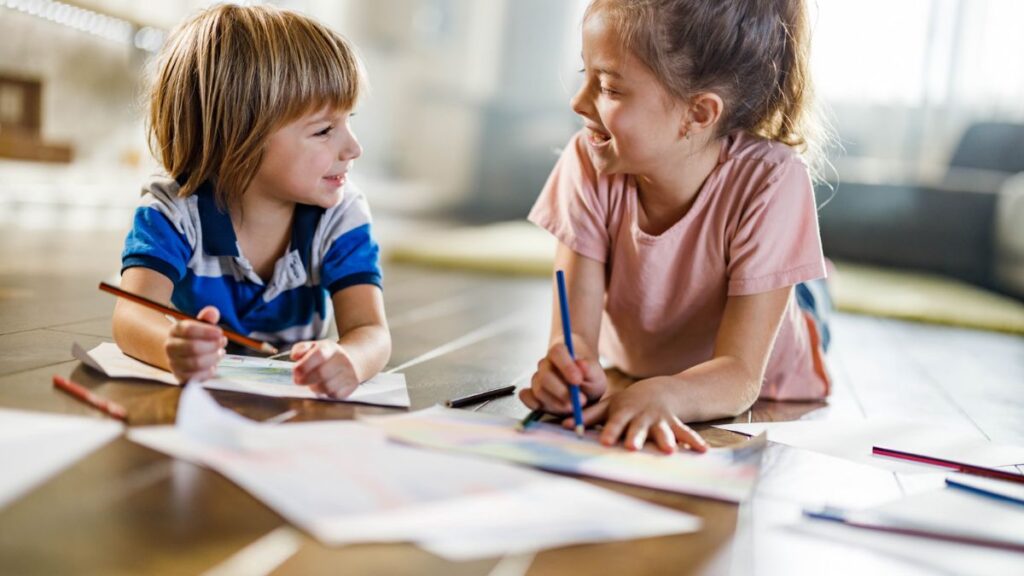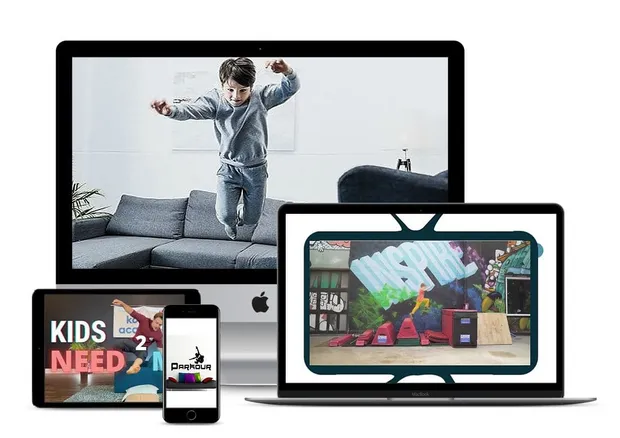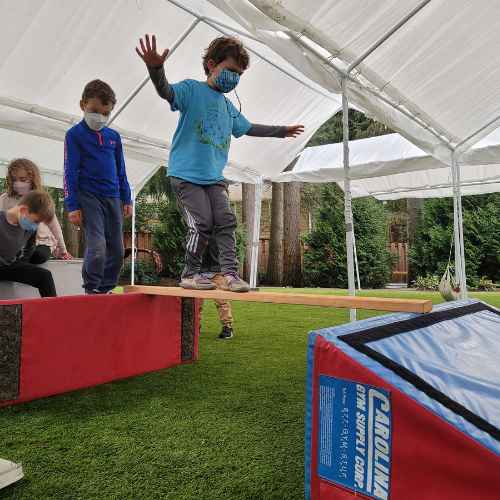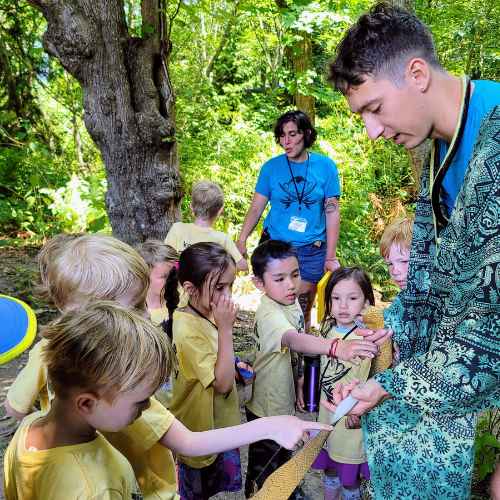
When most people think about teaching empathy to kids, it’s seen as a protective measure for the future. After all, empathy is one of the cornerstones of a compassionate society. It’s also fundamental for solving many of the biggest challenges the world is collectively facing from healing the planet to retaining peace, when people are empathetic beyond their own needs, everyone benefits.
That said, empathy isn’t a skill that most people develop overnight. It’s curated, cultivated and practiced. It can be challenging to feel empathy for the person who yelled at you or who said something mean. So it’s very helpful to start teaching empathy to kids when they are young. That is how we give them the best opportunity to practice being empathetic as they also feel their other feelings like “fairness” or justice, anger, sadness, fear and more.
When kids learn empathy for others when they are young, you can take it slowly. If there are challenges, there’s grace and understanding offered far easier than when adults make the same errors or mistakes. So this is the time to teach empathy for the best results.
Understanding Empathy for Kids
In the simplest of terms, empathy is the ability to recognize another’s emotions. It’s an important skill that needs to be cultivated in children from a young age.
What is Empathy?
The common saying, “Walk a mile in someone else’s shoes” asks us to imagine ourselves in another person’s situation, and to figure out what it may feel like to be them. This complex subject has many dimensions:
- Emotional empathy: This refers to one’s ability to ‘share’ the feelings of another person.
- Cognitive empathy: This refers to one’s capacity to understand another person’s perspective.
- Affective empathy: This refers to the ability to respond appropriately to another person’s mental state.
Empathy has a profound impact on the people who practice it as well as those who are exposed to it. Being empathetic includes all three dimensions making your behavior a valuable role model for the children in your care.
Why Empathy Matters for Kids
Children who practice being empathetic regularly form stronger bonds with their peers and family which leads to healthier relationships. They’re also able to understand different perspectives and find effective solutions to conflicts more easily. They develop emotional intelligence from an early age, something that is crucial when interacting with the world.
Additionally, these children’s actions and behaviors have a ripple effect. By practicing empathy, these kids are:
- Less likely to behave aggressively
- More likely to stand up for their peers
- Able to embrace diversity instead of being threatened by it
- Have an inclusive mindset from a young age.
Empathetic environments can also lower feelings of worry and stress in children who may feel different, a common challenge faced by numerous neurodivergent kids. Instead of feeling left out, empathetic children make others feel cared for which further promotes strong connections and reduced feelings of loneliness.As a result, they will be better equipped to navigate social interactions and build meaningful connections throughout their lives.
Modeling Empathy in Different Settings
That said, it’s not always easy to teach kids empathy. If you’d like your child to learn this set of skills, they also need to feel heard, seen and understood. As a caregiver or parent you have to model listening and acknowledge your child’s feelings so in turn, they can develop a similar capacity for others. When children begin to feel emotionally secure, they are more open to understanding others as well.
Parents, Teachers, and Caregivers as Role Models
A growing child usually learns about emotions through their parents, teachers and caregivers who share their emotions in a way that’s easy for young minds to grasp. As children grow, they develop the ability to identify emotions by interpreting both verbal and non-verbal signals. Over time, this emotional awareness evolves, allowing older children to understand other people’s perspectives, empathize with their feelings, and respond with compassion.
Developing empathy is a continuous learning experience for children. As a role model, consistently demonstrating empathy yourself can greatly influence their progress. By observing your compassionate behavior, they’ll learn to emulate it in their interactions with others. Remember, every moment is an opportunity to nurture and foster their empathetic growth.
The Importance of Demonstrating Empathy in All Roles
As adults, we play a crucial role in modeling empathy in our daily interactions, not only with younger children but with individuals of all ages. By cultivating a consistent habit of practicing empathy, we create a more compassionate environment for everyone around us. It’s important to remember that teenagers, too, are still growing and learning; they benefit from the same understanding and consideration we extend to younger children.
Ultimately, embracing empathy as a core value in all our relationships fosters a culture of kindness and mutual respect.
Empathy-building Activities for Kids:
Utilizing stories from various mediums, such as movies, books, or plays, is an effective way to teach empathy. By seeing how others deal with the same challenges, kids see how their favorite characters recognize the feelings and experiences of others. It also encourages them to explore different viewpoints and fosters their empathetic growth.
Sharing Stories of Empathy in Varied Contexts
After introducing a story, talk with your child about the various characters, plot, and emotional moments. By asking questions and sharing your own reactions, you model empathetic thinking and help them understand various perspectives. This regular practice encourages kids to develop the instincts to notice the emotions and experiences of others, both in stories and in real life. Do this consistently so your child’s skills grow over time and mature as they naturally grow older.
Role-play Scenarios
Role-playing is an extremely effective way to teach empathy as kids can explore different emotions and practice dealing with them in a safe environment. Not only do they familiarize themselves with different emotions but role play teaches them emotional intelligence.
The idea is to create a scenario where one child acts out one emotion while the other reacts to it. For instance, one child could feel hurt for being excluded from a game while the other is asked to respond. You can gauge how emotionally mature a child is by seeing if they acknowledge the other’s feelings and offer to play with them instead.
You can also teach children how to cope with overwhelming emotions by having them act out challenging situations. This allows them to process new emotions in a safe environment and learn how to react calmly if ever faced with a similar situation in the future.
Interactive Empathy for Kids Games
Emotion Charades: This interactive group game transforms learning about emotions into an engaging and enjoyable experience for kids. Participants take turns acting out various emotions, while the other players try to guess the emotion being portrayed. Emotion Charades not only helps children recognize and understand non-verbal cues but also teaches those who struggle with these cues how to respond appropriately.
The game Empathy Detective is another fun alternative. Here, the players have to examine and accurately identify the feelings experienced by a fictional character in specific situations. Without relying on visual cues, kids must use critical thinking and empathy to interpret the character’s feelings, fostering their emotional intelligence and understanding.
Teaching Emotional Literacy:
The first step to practicing empathy is recognizing and labeling emotions correctly.
Recognizing and Naming Emotions
Start by asking kids to name the feelings they may be experiencing in real-time. Notice if they are sad, happy, or angry and check in with them. Helping them recognize these emotions in the present will help them identify that emotion within themselves or another person in the future.
Flashcards are a great way to help them learn about a variety of emotions. Ask them to describe what feelings may correspond with different faces, expressions, and poses. Similarly, read books that deal with various emotions and use the opportunity to have them describe the feelings being portrayed. These activities can be practiced on a daily basis helping kids become familiar with emotions.
Talking About Feelings
Talking about your feelings is crucial when it comes to emotional literacy. By cultivating open communication and creating a safe environment for kids, they’ll be motivated to seek you out repeatedly when they’re confused about their feelings or simply want someone to discuss them with. In turn, you can talk about your feelings as well to encourage them to talk about theirs. Not only will you normalize talking about emotions, but also be an example for them to follow.
Discussing empathy and emotions may not be as easy with young kids who tend to get bored quickly. To keep young children engaged, encourage them to reflect on their emotions throughout different activities. Some kids may want to write about their feelings in a journal, while others may find it easier to draw their feelings out instead. Remember, there is no wrong way for a child to express their emotions as long as they’re respectful of the people around them.
Fun Activities To Develop Empathy and Emotions:
By demonstrating to kids the beneficial effects of their behavior on others, children learn how simple acts of kindness encourage consideration of others.
Encourage Simple Acts of Kindness
Children learn to consider the needs and feelings of others when they are encouraged to share with classmates or siblings, lend a helping hand to a friend in need, or carry out random acts of kindness. These modest, commonplace acts help youngsters develop empathy by demonstrating to them that even little acts of kindness may have a profound impact on someone’s day.
Practicing Perspective-Taking
The capacity to understand and empathize with others’ viewpoints, known as perspective-taking, is a fundamental social skill that underpins our daily interactions. Nurturing this ability in children is crucial, as it forms the foundation for effective communication and fosters stronger, more compassionate connections between individuals.
Using puppets can help you and a child act out various situations in a lighthearted environment. This allows them to understand how their character is feeling in a story while having fun at the same time.
There are various versions of “switching shoes” that can also help build empathy. In these games, kids describe what it might feel like to be in “another person’s shoes” which once again reminds kids that different people have different perspectives on a single subject.
Seeing Through Another’s Eyes
Developing the ability to understand and empathize with others is a learned skill that requires nurturing. Engaging children in activities that promote perspective-taking can help them develop this crucial social skill. One effective approach is to discuss scenarios that encourage them to consider alternative viewpoints.
For example, if one of your children argues with another, you might ask, “How do you think your brother or sister feels now?” If they are rude to someone you could ask them, “How do you think they feel now after you used that tone?” These questions will force them into thinking about the consequences of their bad behavior.
Developing Empathy For Kids Active Listening Skills:
Paying attention to what someone is saying is a crucial component of empathy. By listening intently to another person, you show that you care. Kids need to be taught this skill and the easiest way to help them is to teach them just how to do so.
Listening with Attention
Attentive listening is important and there are a variety of ways to teach this skill. We commonly believe that eye contact is required to show someone you’re listening, but for kids with ADHD or other neurodivergent traits, maintaining eye contact may be a challenge. Eye contact is great, but it’s important to look for other clues of attention as well. Consider that nodding, mmhmm’ing, and asking questions are also signs that someone is listening attentively.
Active Listening Games
Playing games makes learning how to listen much more enjoyable. In the popular game, “Telephone,” one child whispers a word or a phrase to the person sitting next to them, who in turn whispers the word or phrase to the next, until the message reaches the last person. This is a wonderful exercise to help children pay attention to what others are saying.
Story Building is an engaging narrative game that fosters both listening skills and empathy. In this activity, children collaborate to create a story by taking turns adding a word or phrase to the unfolding narrative. To contribute effectively, participants must actively listen to the story’s progression, consider previous contributions, and thoughtfully add their own elements, ensuring cohesion and demonstrating empathy for the collective creative process.
Empathy-themed Books for Kids
There are many books that teach kids how to foster empathy.
Last Stop on Market Street by Matt de la Peña tackles various issues through the eyes of a young teenager.
Trudy Ludwig’s The Invisible Boy tells the story of a young boy who feels ignored. It goes on to show how little deeds of kindness may have a significant impact.
Jacqueline Woodson’s moving tale Each Kindness highlights the value of empathy and the impact that seemingly insignificant deeds may have on others.
Fostering Cooperation and Teamwork:
Group work isn’t easy to navigate for the majority of kids. So, teaching them to problem solve by collaborating with their peers is an essential skill to be nurtured. Understanding the feelings of another is exactly what group projects and games encourage. By working in pairs or groups, kids learn how to team up, share tasks, and pool ideas to achieve common goals.
Group Projects and Games
While working in a group project or playing group games, children are encouraged to consider the feelings of a large number of people. And while this sounds challenging for kids, it’s no doubt a great learning opportunity. They’ll learn how to be more inclusive and support everyone involved.
Teach collaborative problem-solving by encouraging kids to listen to each group member’s perspective and acknowledge their input. Once everyone has had a say, facilitate discussions that allow members to offer their solutions. Once everyone has a chance to speak, guide children to finding common ground and work towards an acceptable solution. Such group activities will help children respect differing opinions and also learn to tackle them effectively.
Managing Conflicts with Empathy
Understanding another person’s perspectives and feelings is a critical skill for managing conflicts. When kids develop empathy, they can better recognize different viewpoints and address root causes of disagreements more effectively. Empathy also helps them maintain emotional control and express themselves calmly during disputes.
By practicing empathy during conflicts, children learn to listen actively and engage in respectful conversations. This allows them to consider the emotions of everyone involved and seek solutions that benefit all parties. In heated situations, empathy enables kids to regulate their emotions and approach conflicts with a positive mindset.
Key Empathy for Kids Skills for Conflict Resolution:
- Active Listening: Listening promotes comprehension and compassionate communication that further encourages polite conversation even in difficult circumstances. Considering the feelings of everyone involved eventually allows individuals to find mutually acceptable solutions.
- Emotional Self-Control: Disagreements can often lead to heightened emotions and raised voices. But when your child practices empathy and emotional self-control, they’ll be better able to regulate emotions and be prepared to tackle such situations more positively. Simple steps such as breathing deeply can help children lessen the energy of their feelings and arguments, and manage conflicts more calmly.
- Perspective-Taking: Enables children to understand different viewpoints and address underlying issues while appreciating another’s perspective. When individuals learn to take a step back and consider other points of view, conflicts tend to resolve more easily.
Nurturing empathy for kids is an ongoing process that involves recognizing, understanding, and responding to emotions in a caring manner. As adults, our role is crucial in modeling empathetic behavior and encouraging children to develop these skills through practice. By fostering empathy, we equip children with the emotional intelligence they need to form deep connections, build meaningful relationships, and navigate life with compassion and understanding.
The truth is that teaching empathy is a journey that requires consistent effort, attention and practice. That said, the rewards of raising emotionally intelligent and empathetic kids are immeasurable. As we strive to create a kinder, more compassionate world, we can help kids down this important path and guide them to make a positive difference in the lives of the people they care about as well as friends they meet along the way.
If you’re in the Seattle metro, we offer summer camps and after school programs designed to empower kids and infuse their sense of independence. Contact us today to learn more.
GET Access to the ULTIMATE PLAY DATE PACKAGE (Value: $49) for FREE!


7-Day Crystal Shard Adventure
Unleash your child’s potential with our 7-day crystal shard movement adventure!




